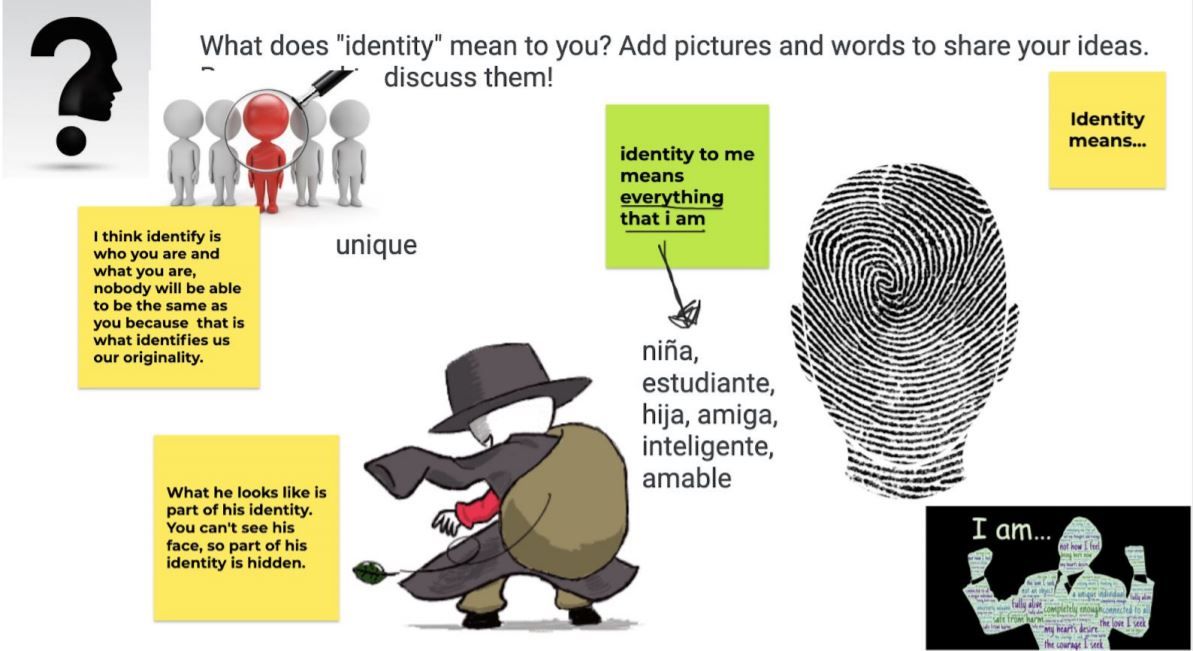This unit was created by Nikysha D. Gilliam, an English/English Language Development teacher at Susan Miller Dorsey Senior High School in Los Angeles, CA, as part of the fall 2020 Pulitzer Center Teacher Fellowship program on Media, Misinformation, and the Pandemic. It is designed for facilitation across approximately fifteen class periods.
For more units created by Pulitzer Center Teacher Fellows in this cohort, click here.
Essential Questions:
We all have this notion of who we are, or who we think we are—but what happens to that identity in a global crisis? How do you change, or do you? Do certain characteristics get amplified?
Unit Overview:
I have always been interested in helping students grapple with the concept of their identities, what comprises their identies, and how their identities are formed, shaped, or changed. This spring, with the onset of the COVID-19 pandemic and isolation, our country saw an increase in violence. Is it a coincidence? Is there a correlation? How does the media play a role in this? In the wake of crises and a pandemic, it seems like a perfect opportunity to explore identity. Thank you, Pulitzer Center, for the opportunity.
In this unit, students will reflect on their own experiences of identity and community during the COVID-19 pandemic, and will analyze texts by journalists and research from experts about the experiences of others. Throughout the unit, students will write personal narratives and letters to themselves and others. The unit culminates in a performance task that asks students to communicate their understanding of identity and how it is impacted by the pandemic in the form of a video confessional, photo essay, or a recorded interview with a family member.
Resources for Facilitating this Unit:
Click here for a PDF outlining lesson plans for this unit, including warm-ups, resources, discussion questions, activities, and student examples.
Find examples of exercises completed by students at Susan Miller Dorsey Senior High School in fall 2020 below:
- Jamboard reflections on the meaning of identity (warm-up activity for day 1)
- Notes to a neighbor (homework for days 5-6)
- Letters to yourself (homework for days 7-8)
- "My COVID Summer" personal narrative (homework for day 10)
Performance Task:
Students finalize a performance task that communicates their understanding of identity and how it is impacted by the pandemic. Potential projects include:
- Video confessional
- Photo story
- Interview with a family member that you live with or who live in another country (FaceTime or audio)
Requirements:
1. The resource includes students’ reflection on what identity is, and how the pandemic has impacted their identity or the identity of someone in their community.
2. A Message to the community that uses the following structure:
- I am...
- You are...
- We are...
Assessment/Evaluation
Several formative assessments are outlined throughout the unit above. A rubric that can be used to evaluate the performance task can be found on page 22 of the PDF above.
Standards:
The following targeted tenth grade English standards are addressed throughout the unit:
RI 10.1 - Cite strong and thorough textual evidence to support analysis of what the text says explicitly as well as inferences drawn from the text.
RI 10.2 - Determine a central idea of a text and analyze its development over the course of the text, including how it emerges and is shaped and refined by specific details; provide an objective summary of the text.
RI 10.7 - Analyze various accounts of a subject told in different mediums (e.g., a person’s life story in both print and multimedia), determining which details are emphasized in each account.
W 10.3 - Write narratives to develop real or imagined experiences or events using effective technique, well-chosen details, and well-structured event sequences.
W 10.10 - Write routinely over extended time frames (time for research, reflection, and revision) and shorter time frames (a single sitting or a day or two) for a range of tasks, purposes, and audiences. tasks, purposes, and audiences
SL 10.5 - Make strategic use of digital media (e.g., textual, graphical, audio, visual, and interactive elements) in presentations to enhance understanding of findings, reasoning, and evidence and to add interest.
SL 10.6 - Adapt speech to a variety of contexts and tasks, demonstrating command of formal English when indicated or appropriate.
